Ancient Jeju Fortress
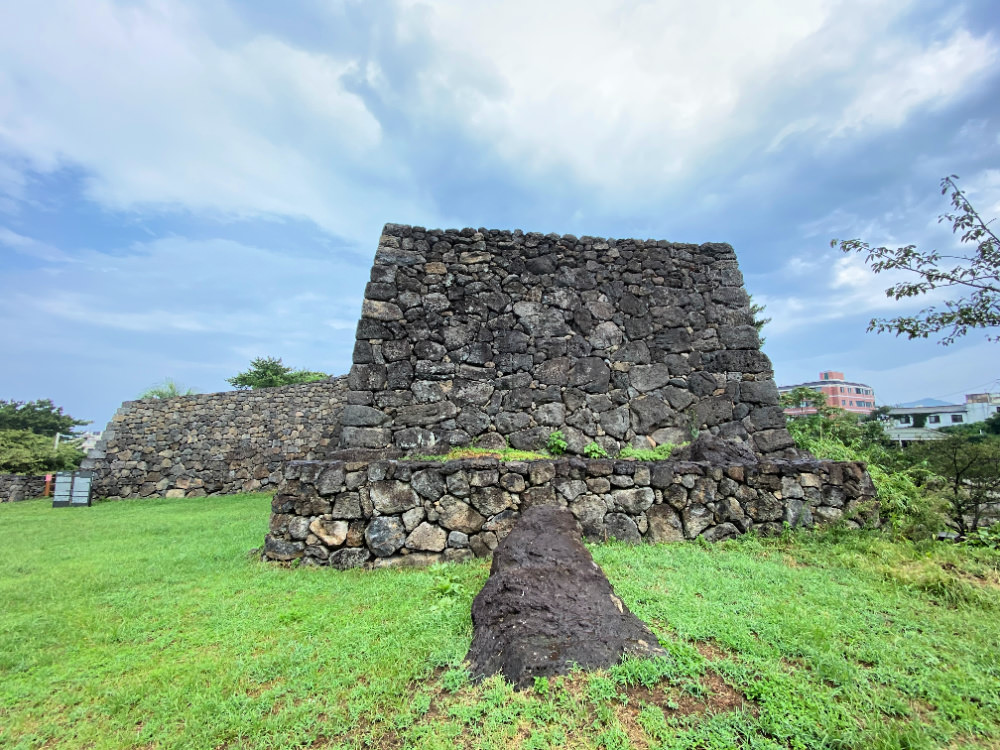 Watchtower of the Fortress overlooking the sea on Jeju Island
Watchtower of the Fortress overlooking the sea on Jeju IslandJeju Fortress
Jeju Island's self-governing province designates Jeju Fortress as Monument Number 3. I found this historical treasure by chance as I walked towards my hotel.
Of course, I got excited that I found a bonus along the way. I started exploring the walls and enjoying its splendor. Having found the central command area of the fortress, I search for descriptions about it.
Glad that I found the metal information board set up right in front (or beside) the fortress' central attraction - watchtower and elevated pavilion.
According to the board's descriptions, Jeju Fortress surrounded Jeju downtown to protect its residents from the invaders.
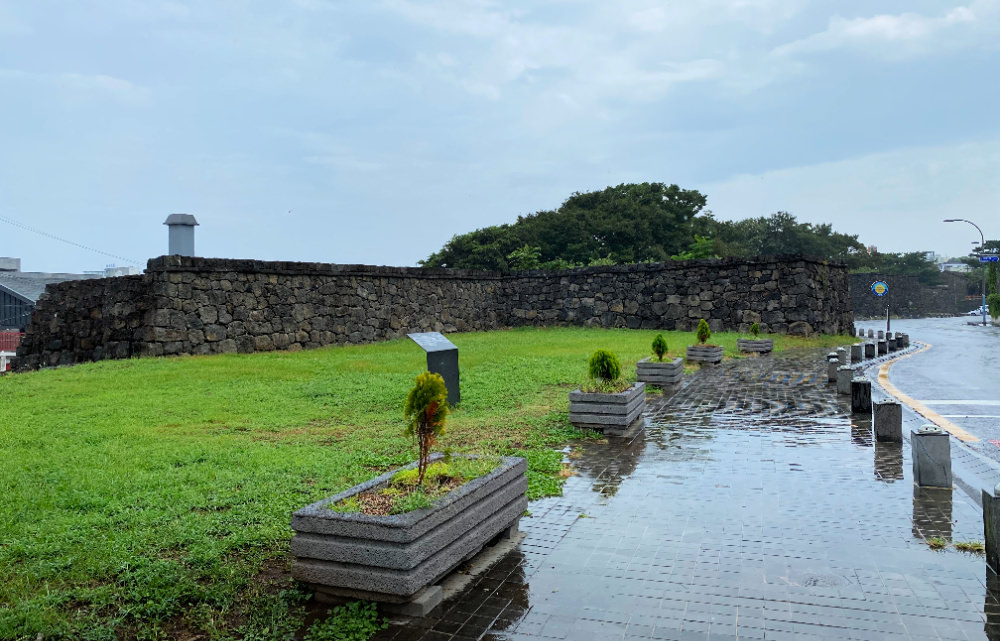 A view of the Fortress from the roadside on Jeju Island
A view of the Fortress from the roadside on Jeju IslandFortress Features
Historians and experts believed that the fortress was built before 1411, based on the record of King Taejong. According to the record, the King ordered to renovate the fortress in 1411, which falls on the 11th year of King Taejong.
A geography book called Sinjeung Donggugyeojiseungram, the fortress was initially 4,394 (around 1.3 kilometers) long and 11 cheok (about 3.3 meters) high.
The fortress is positioned between the Sanjicheon River and the Byeongmuncheon River and was considered the basis for the modern fortress.
The Jeju governor, Gwak Heul, strengthened the fortress to prevent the repeat of the Japanese invasion (in 1555). The governor completed the extensions in 1565, the 20th years of King Myeong Jong.
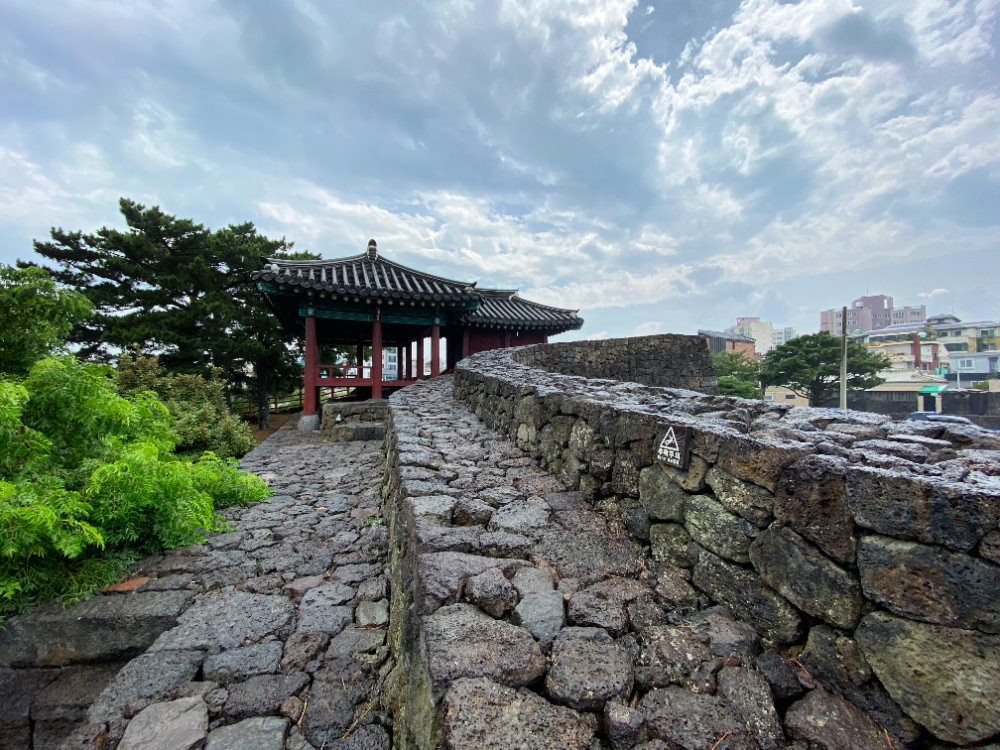 A photo taken from the top of the Fortress' wall
A photo taken from the top of the Fortress' wall
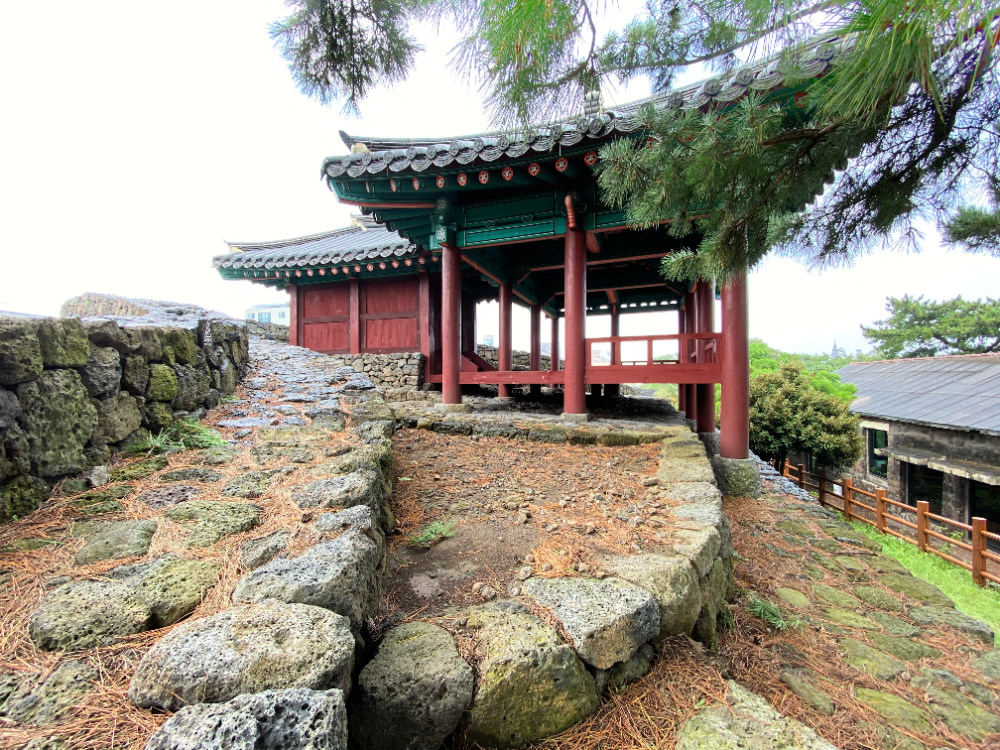 A pavilion on top of the Fortress A pavilion on top of the Fortress |
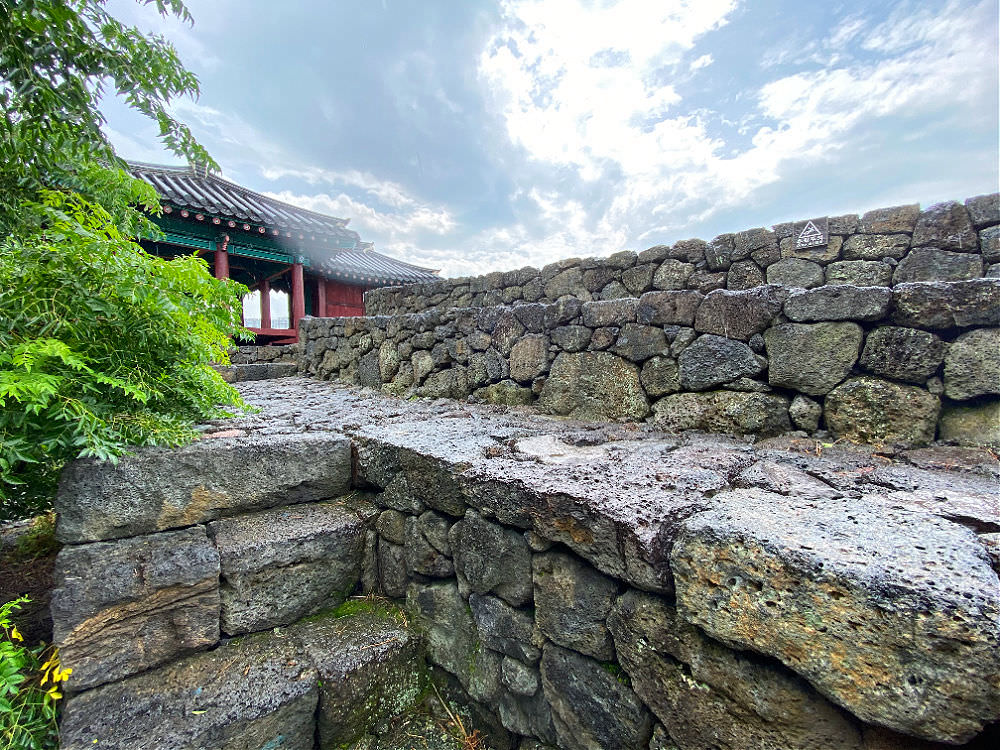 Think slabs of rock walls Think slabs of rock walls |
Jeju governor Seong Yun Mok further extended the fortress higher in 1599, which is the fortress's current height and shape (during the 32nd year of King Seon Jo).
Then the succeeding governor (moksa) Kim Yeong Su continued to extend and built additional walls to prevent the Sanjicheon River from overflowing.
When Jeju Port was constructed in 1925-28, they used the fortress wall stones to build the port and its reclamation areas.
However, the fortress's present form was rebuilt by reconstructing it by studying the remaining parts of the fortress's construction style during the Joseon Dynasty.
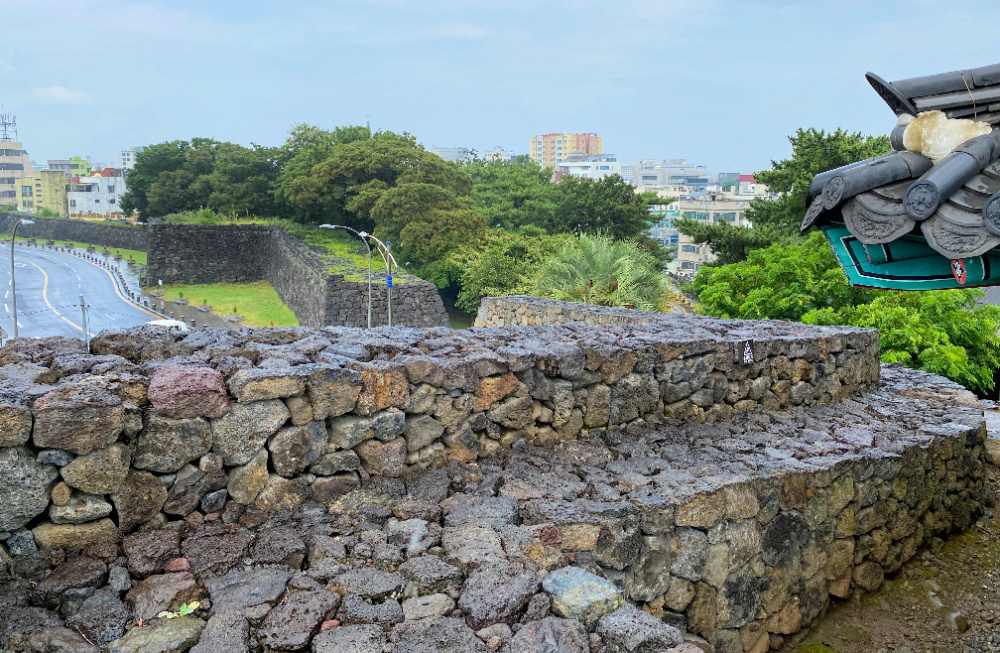 A sight of the Fortress' walls
A sight of the Fortress' walls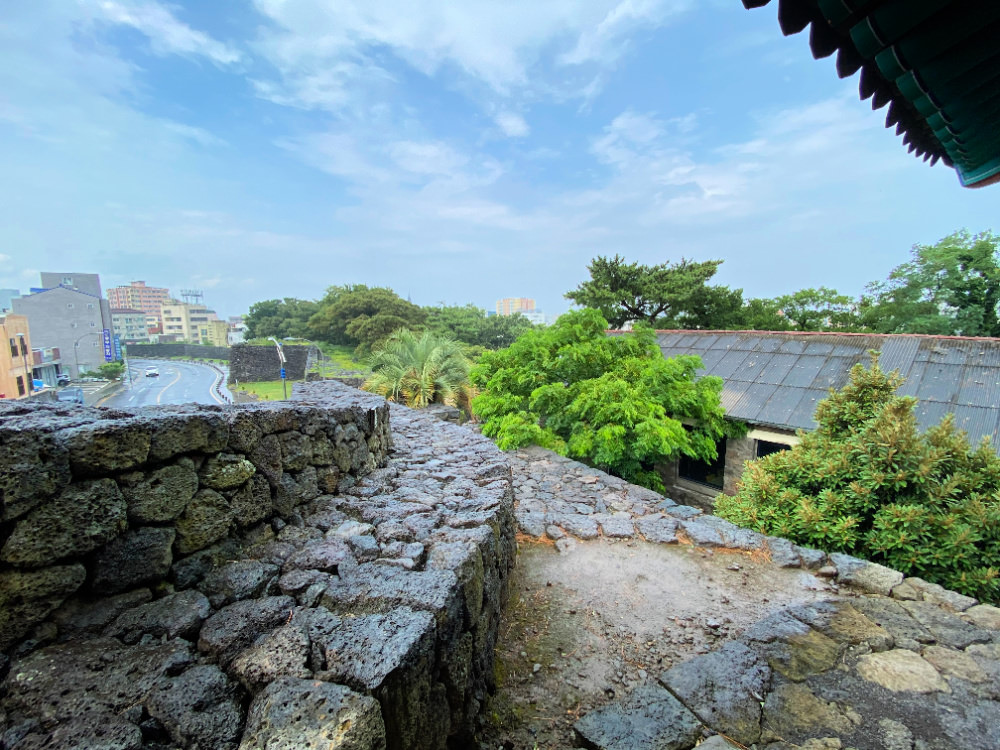 A photo taken on top of the fortress' wall that measures 3 meters high
A photo taken on top of the fortress' wall that measures 3 meters highSince Jeju Fortress is located in Jeju City, you can either tell the driver to bring you straight or use your navigation and walk to the area if you're in the city.
Thanks for reading. If you have questions, please drop me a line!
Have a wonderful day!
Get Exciting Activities
Book one of our exciting activities today to experience the thrill of a lifetime! Take advantage of this opportunity and secure your spot in advance.
Hotel Map Guide
Find your affordable, accessible, and comfortable hotel in Seoul at Agoda.Com. See the hotel map below...
Hotel Booking Guide
Find affordable and amazing hotels on Agoda.com using the search box below. Book now to enjoy great discounts and save!


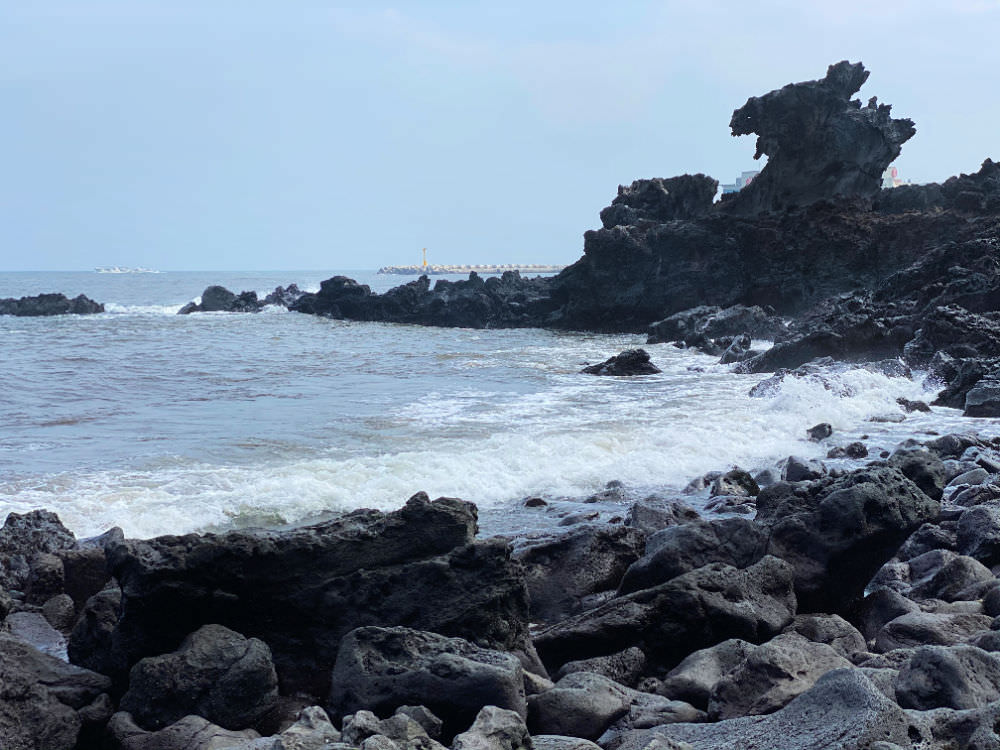




New! Comments
What do you think about this page? Leave me a comment in the box below.